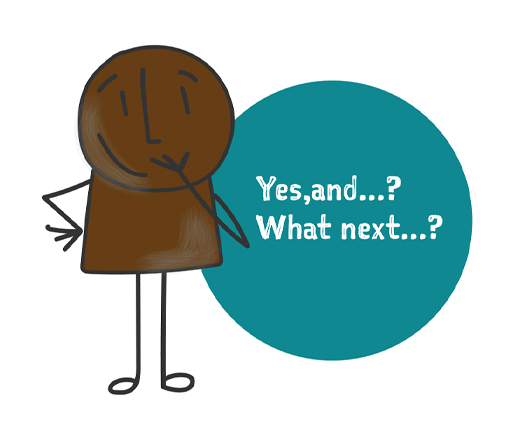7 Keeping the conversation moving forward

‘Yes, and …’ is a common feature of improvisation in the theatre. Performers use it to make sure the scene keeps moving forward. By saying ‘yes’ you are acknowledging what the other person has said and the ‘and’ moves it forward. This means that the possibilities of the conversation are kept open to be played with and built on.
You can explore this now in the next activity.
Activity 6 The possibilities of saying ‘Yes, and …’
Read the conversation below between Alex, Sheena and Ali. Then answer the questions that follow.
- Ali’s response to Alex and Sheena’s exchange didn’t use the ‘yes, and …’ technique. Instead she uses ‘no, but’. What effect does ‘no, but’ have on the conversation flow?
- How could Ali have rephrased her response to keep the conversation open to further possibilities? Rewrite her response below to keep the conversation playful.
Discussion
Using the word ‘no’ or ‘but’ (or variations of them) blocks the conversation. It does this by setting up a feeling of right or wrong and stops a conversation from carrying on. Ali probably didn’t mean to do this. She was trying to join in. However, the words she used stopped the conversation feeling playful, exploring possibilities and keeping everyone in the conversation actively engaged. This doesn’t mean she can’t express her opinion that the main argument of the article is the pollution, but this can be brought into the conversation as an ‘and’ rather than a ‘but’.
For example, Ali’s response could be rewritten as follows.
This type of response, although not using the words ‘yes, and …’, acknowledges the previous responses (‘yes’) and then builds from these, linking into her own perspective and maintaining the openness of the possibilities for the conversation to move forward.
Very importantly, by finishing with a question, Ali now deliberately opens the door for a continuation and development of the conversation.
In the next section, you will look at the importance of being aware of your audience when writing on online learning forums.
